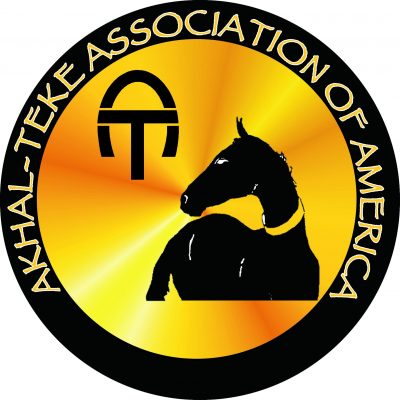Not a big deal I used to think….but…something is lurking in the woodshed and we don’t quite know what…
A horse carryng one copy of NFS may be less healthy and here is why…
How soon it could be bred out of the breed depends upon the rigorous of the registries requirements. Making testing mandatory for registration and any horse that is a carrier is only issued non-breeding papers and it could be gone in a couple of generations – in registered horses. I understand that the current gene pool is small but this is also a good opportunity to rid the breed of these deleterious mutations. Now the next question is, why? If carriers appear to be healthy then all you have to do is not breed two carriers and all should be well. However, breeding a carrier to a non-carrier gives you a 50% chance of producing foals that are carriers. This can actually help spread the allele through the population. So, why should we care if carriers are healthy? Now for genetics 101. What genes do is produce proteins, mostly enzymes, and these molecules control all of the chemical reactions in an organisms body. Your body is basically run by enzymes and electricity. All horses have identical genomes – they have the same genes. All horses have the gene for NFS. This gene produces a protein that is necessary for hair production, tooth production, elements of the digestive tract etc. Most enzymes are like this, they do not control just one reaction, but several different ones. Horses, and humans, have two of each gene. One from the mother and one from the father. You got a gene for eye color from each of your parents. All humans have two genes for eye color (it’s actually a bit more complicated than this but bear with me). Genes come in different types called alleles. There is an allele for blue eye color, brown eye color etc. The NFS allele is a mutated gene that doesn’t produce any enzyme at all, it is broken. So, a horse that receives two broken alleles (one from the sire and one from the dam) cannot produce the enzyme that facilitates hair production, tooth growth etc. This is very similar to the mutation that produces naked Chinese Crested dogs. Puppies with two broken alleles are born dead. Those with one one broken allele have problem producing hair, building teeth, and are sometimes born deaf. Those with two good alleles are called Powder Puff Cresteds and have full coats, good teeth etc. Reputable breeders never breed a hairless to a hairless because, on average, 25% of the puppies will be dead. But, since hairless is the desired trait people breed hairless to powder puffs and just accept that the hairless dogs will have bad teeth and maybe be born dead. So back to why we should care about carriers. Remember, enzymes control many different reactions,that is why NSF foals have so many problems. A horse that is a carrier only produces half as much enzyme as a normal horse, and maybe less. How so? Enzyme production can be effected by other genes in the animals genome (which have different alleles). Some Hairless Crested dogs have very little hair, some actually have fine fur all over their body. Those with fine fur produce more enzyme (express) than those that are more naked. So, enzyme production in NFS carriers will vary also (See Quarter Horses who carry HYPP. It’s a dominant trait but expression can very tremendously from horse to horse). So, there is every possibility that carriers, while seeming healthy, may be prone to problems that may not even be associated with NFS. I do not know if there has ever been a study done on colic rates (or other digestive problems), dental problems, or laminitis in NFS carrier horses but I would not be surprised if carriers had a higher incidence than non-carriers. This is why the allele should be bred out of the breed. Another good example is sickle cell. For decades it was thought that only people with two non-enzyme producing alleles were effected. People who were only carriers were considered to be healthy. But, recent evidence has shown this not to be true and that carriers have certain health risks that can sometimes be fatal. BGSU instituted a policy of having all athletes tested for sickle cell and then having oxygen on hand when carrier athletes are practicing/competing. This followed from the unexpected death of a football player during practice. In truth, carriers of deleterious alleles are usually not as healthy as non-carriers. This is why the allele should be bred out of the breed. I hope this is helpful. I know that the Teke gene pool is small but now is the time to be very rigorous in policing breeding stock and, perhaps, the ATAA should formulate guidelines and a breeding plan to help keep the gene pool as diverse as possible but to also breed out this deleterious allele. I hope this long monologue helps. LOL!!
A horse carryng one copy of NFS may be less healthy and here is why…
How soon it could be bred out of the breed depends upon the rigorous of the registries requirements. Making testing mandatory for registration and any horse that is a carrier is only issued non-breeding papers and it could be gone in a couple of generations – in registered horses. I understand that the current gene pool is small but this is also a good opportunity to rid the breed of these deleterious mutations. Now the next question is, why? If carriers appear to be healthy then all you have to do is not breed two carriers and all should be well. However, breeding a carrier to a non-carrier gives you a 50% chance of producing foals that are carriers. This can actually help spread the allele through the population. So, why should we care if carriers are healthy? Now for genetics 101. What genes do is produce proteins, mostly enzymes, and these molecules control all of the chemical reactions in an organisms body. Your body is basically run by enzymes and electricity. All horses have identical genomes – they have the same genes. All horses have the gene for NFS. This gene produces a protein that is necessary for hair production, tooth production, elements of the digestive tract etc. Most enzymes are like this, they do not control just one reaction, but several different ones. Horses, and humans, have two of each gene. One from the mother and one from the father. You got a gene for eye color from each of your parents. All humans have two genes for eye color (it’s actually a bit more complicated than this but bear with me). Genes come in different types called alleles. There is an allele for blue eye color, brown eye color etc. The NFS allele is a mutated gene that doesn’t produce any enzyme at all, it is broken. So, a horse that receives two broken alleles (one from the sire and one from the dam) cannot produce the enzyme that facilitates hair production, tooth growth etc. This is very similar to the mutation that produces naked Chinese Crested dogs. Puppies with two broken alleles are born dead. Those with one one broken allele have problem producing hair, building teeth, and are sometimes born deaf. Those with two good alleles are called Powder Puff Cresteds and have full coats, good teeth etc. Reputable breeders never breed a hairless to a hairless because, on average, 25% of the puppies will be dead. But, since hairless is the desired trait people breed hairless to powder puffs and just accept that the hairless dogs will have bad teeth and maybe be born dead. So back to why we should care about carriers. Remember, enzymes control many different reactions,that is why NSF foals have so many problems. A horse that is a carrier only produces half as much enzyme as a normal horse, and maybe less. How so? Enzyme production can be effected by other genes in the animals genome (which have different alleles). Some Hairless Crested dogs have very little hair, some actually have fine fur all over their body. Those with fine fur produce more enzyme (express) than those that are more naked. So, enzyme production in NFS carriers will vary also (See Quarter Horses who carry HYPP. It’s a dominant trait but expression can very tremendously from horse to horse). So, there is every possibility that carriers, while seeming healthy, may be prone to problems that may not even be associated with NFS. I do not know if there has ever been a study done on colic rates (or other digestive problems), dental problems, or laminitis in NFS carrier horses but I would not be surprised if carriers had a higher incidence than non-carriers. This is why the allele should be bred out of the breed. Another good example is sickle cell. For decades it was thought that only people with two non-enzyme producing alleles were effected. People who were only carriers were considered to be healthy. But, recent evidence has shown this not to be true and that carriers have certain health risks that can sometimes be fatal. BGSU instituted a policy of having all athletes tested for sickle cell and then having oxygen on hand when carrier athletes are practicing/competing. This followed from the unexpected death of a football player during practice. In truth, carriers of deleterious alleles are usually not as healthy as non-carriers. This is why the allele should be bred out of the breed. I hope this is helpful. I know that the Teke gene pool is small but now is the time to be very rigorous in policing breeding stock and, perhaps, the ATAA should formulate guidelines and a breeding plan to help keep the gene pool as diverse as possible but to also breed out this deleterious allele. I hope this long monologue helps. LOL!!
And the good news, people are starting to check it out on the ATAA web!


